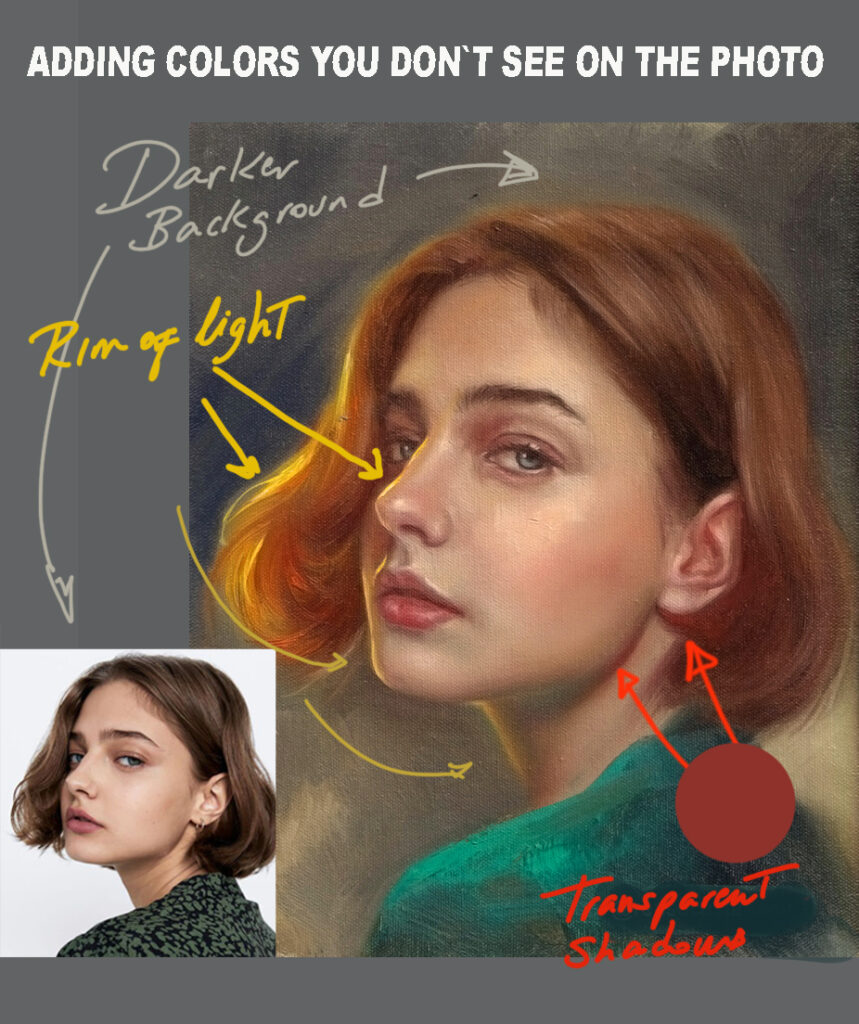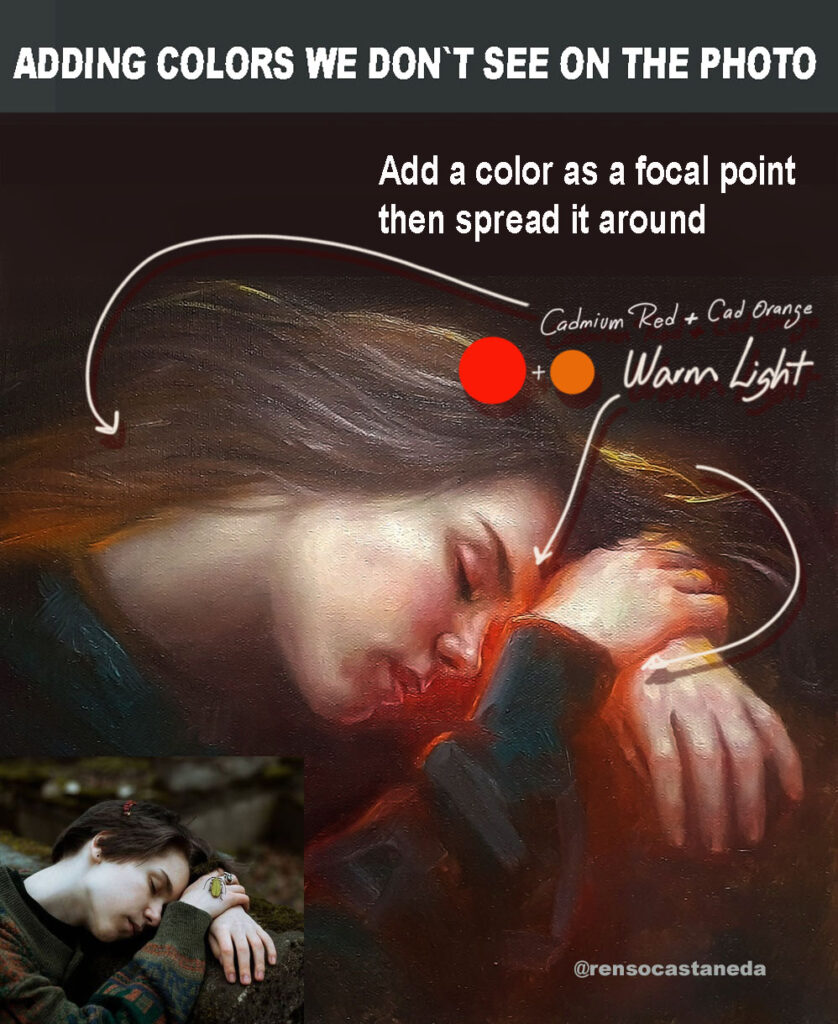One of the most liberating aspects of painting is the ability to depart from reality. A reference photo is just that—a reference. It doesn’t dictate what you must paint; instead, it offers a starting point, a suggestion. As artists, we have the power to transform an ordinary scene into something emotionally charged, poetic, or even surreal—all through the intentional use of color.
Why Add Colors That Aren’t There?
When you’re painting from a photo or from life, you’re not simply trying to copy what you see. You’re interpreting it. You’re telling a story. And color is one of your strongest storytelling tools. By shifting the palette—even subtly—you can create mood, tension, or harmony that the original image doesn’t convey.
Photos often flatten light, dull the vibrancy of natural colors, or miss the emotional undercurrents of a scene. That’s where your creative eye comes in. You can breathe life, warmth, or mystery into an image by introducing colors that evoke feeling rather than facts.

Choosing the Right Mood
First, ask yourself: What do I want the viewer to feel?
- Do you want to create a warm, nostalgic feeling? Try weaving in soft oranges, warm ochres, or dusty rose tones—even if the photo is cool and neutral.
- Looking for a moody, introspective atmosphere? Bring in deep blues, purples, or desaturated greens.
- For something dreamy or magical, go for unusual hues—lavender shadows, turquoise highlights, or hints of pink where you’d expect brown or gray.
Where to Add Unexpected Color
You don’t need to flood the painting with new hues to make an impact. A touch of unexpected color in the right spot can change the whole feel.
- Shadows are a great place to experiment. Rather than using black or gray, try deep violet, blue, or even green shadows.
- Backgrounds can be simplified or stylized with colors that enhance the subject’s presence.
- Highlights and reflected light can hold warmth or coolness that complements the painting’s mood, even if it’s not in the reference.

Examples in Action
Imagine a reference photo of a person sitting by a window. The image is neutral—soft daylight, gray tones, beige walls. You could recreate that exactly, but what if instead you infused the shadows with deep indigo, and let warm amber tones filter through the window light? Suddenly the scene feels intimate, contemplative—almost cinematic.
Or take a still life of a white vase and some fruit. By adding hints of coral, turquoise, or even violet in the shadows and reflections, the whole painting becomes more vibrant and expressive. The viewer won’t consciously notice the liberties you’ve taken—they’ll just feel it.
Trusting Your Inner Colorist
At first, adding imaginary colors might feel risky. You may wonder if you’re “breaking the rules” or doing it “wrong.” But remember: some of the greatest painters—Van Gogh, Matisse, the Impressionists—broke from realism to express something deeper. They weren’t interested in copying reality; they were after something truer than truth.
Try this: next time you work from a reference, do a quick color sketch first. Play with tones that aren’t there. Push the palette. You might surprise yourself with how much emotion you can inject into a simple scene.
The camera captures facts. You, the artist, create feeling.
